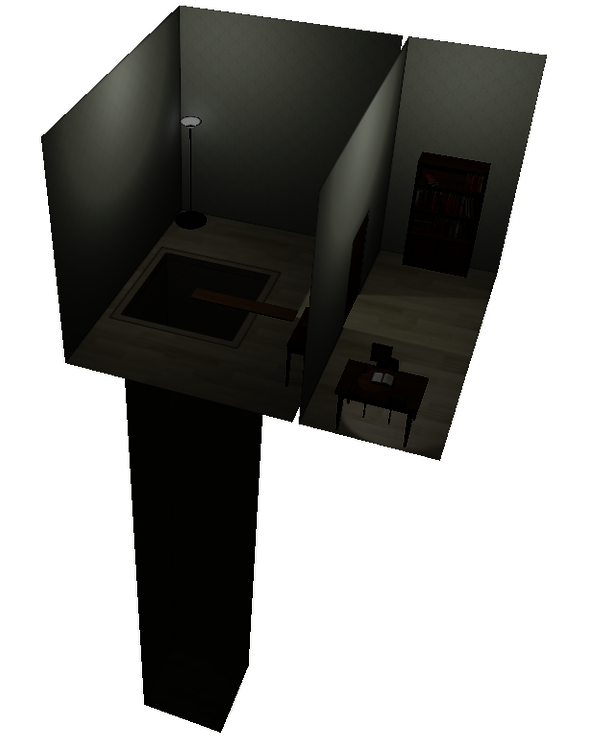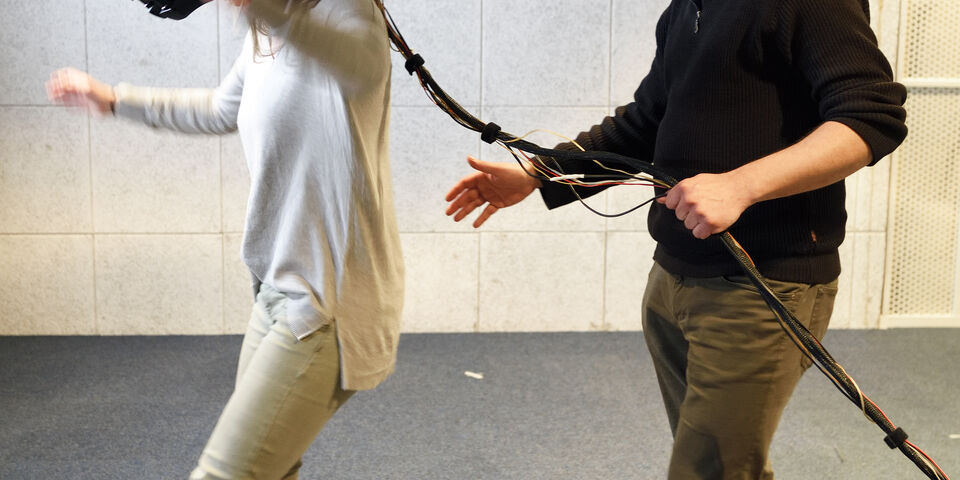In the virtual pit
In a dark room inside the IPO building we find an Eindhoven housing estate. We see an Afghan mountain landscape; a kitchen where a frying-pan bursts into flame; a deep pit. In the VirTU/e Lab of Human-Technology Interaction, virtual realities are created for psychological research, and it is examined what it is that makes people experience this mock-reality as real.
I find myself in an apparent reality; I am constantly reminded of this by the heavy nVisor SX111 which I am carrying around on my head. They can’t bring me to my knees; I’m not going to fall for anything! My bravado disappears like snow under a hot sun when researcher Antal Haans asks me to step into a pit. I walk up to the edge and peer down into the unfathomable depth. It takes me as long as thirty seconds before I actually dare to take a step forward.
“By means of this virtual environment we are conducting research into what we call presence: we want to know which aspects determine the extent to which people actually experience being in the virtual world”, says Haans, Assistant Professor at Human-Technology Interaction. In his view, there are a few visual mechanisms that prove to be essential: as long as the image adjusts to the head movements (measured by a rotation sensor on the headset), and objects realistically seem to become bigger when you move towards them (on the basis of position measurements with cameras in all corners of the lab), the biggest part of the effect has already been achieved.
Except for research into people’s perception of virtual environments, the VirTU/e Lab in the IPO building is also used by scientists and students of Human-Technology Interaction for experiments that are difficult to carry out in ‘the wild’ or in a ‘normal’ lab. Virtual reality offers the best of both worlds, Haans explains “You can combine the realism of a natural situation with the control you have in a laboratory setting.”
Research in the VirTU/e Lab
Persuasive technology covers a great part of the research conducted in the VirTU/e Lab. Hereby technology is deployed to bring about a certain behavioral change, for example by making people undergo a ‘virtual’ experience, like a kitchen fire. In addition, experiments are carried out with so-called social agents – humanoid virtual characters that communicate with users. It appears that people trust these social agents more when they mimic their head movements with a small delay.
The VirTU/e Lab is also used frequently for research into environmental psychology. This is done to find out how you can design rooms in such a way that people feel safe and comfortable there. For an experiment concerning dynamic outdoor lighting (in which street lights are only switched on when there is someone actually passing by), use was also made of a virtual environment as a step between a pilot on the TU/e Campus and a follow-up study in the Eindhoven Achtse Barrier estate. At present, research is being conducted into how escape routes in buildings can be designed in such a way that people will automatically flee in the right direction in a panic situation.
In a way, the American drone pilots at bases in Texas and New Mexico controlling pilotless combat aircraft in Iraq and Afghanistan are also operating in a virtual reality - however tangible the results of their actions may be: at the end of their working day they just enjoy dinner at home in the circle of their family. It has become clear that a remarkably high proportion of this military personnel is suffering from posttraumatic stress. In the past it was researched in the VirTU/e Lab how the ‘virtual’ distance of drone pilots from their targets can affect the way in which these pilots experience their work.



Discussion